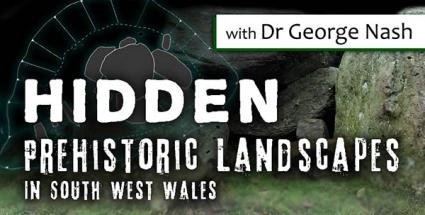
Was an ancient chieftain devoured by toads? Delve into the ancient landscape and learn about a portal dolmen at Trellyffaint which is littered with ritual monuments—their use and date yet unknown!
The much-ruined burial monument, known as Trellyffaint, is considered to represent the remains of a Portal Dolmen. The folklore associated with the monument dates back to the medieval period when Welsh historian and geographer, Giraldus Cambrensis (Gerald of Wales), believed that Trellyffaint, or ‘Toad’s Hall’, was so-named because a chieftain buried inside the tomb had been hunted and eaten by toads!
In late 2016/early 2017, a team of archaeologists, led by researcher Dr George Nash from the University of Bristol and co-founder of the Welsh Rock Art Organization, uncovered through geophysical survey the remains of a possible Stonehenge-type prehistoric henge monument next to the south-eastern section of the monument, standing 250 meters east of the Welsh coastline and Cardigan Bay, UK.
In April 2018, Dr Nash and co-director Carol James will be directing a small excavation program that will hopefully identify two clear circular anomalies and tie-down a dating sequence. They regard these features may possibly be henges, precursors to Stonehenge (otherwise referred to as hengiforms) each measuring around 12 meters in diameter and possessing a possible ditch.
Dr George Nash has been an academic and professional archaeologist for the past 30 years and has undertaken extensive fieldwork on prehistoric rock-art and mobility art in Chile, Denmark, Indonesia, Israel, Malaysia, Norway, Sardinia, Spain and Sweden. He has written and edited many books on prehistoric art and prehistoric monumentality, including: Decoding Neolithic Atlantic and Mediterranean Island Ritual | Visit Dr Nash’s Website
